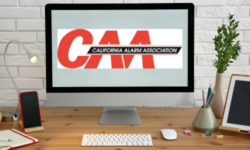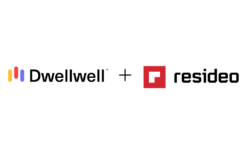Say Goodbye to Dumb Buildings
This year I have noticed an increase in smart building/home technology. So I thought it was a good time for an update on some of the technology being used in both residential smart homes and commercial building automation. This technology activity promises to increase substantially during the coming year.
Being an old alarm dealer myself, I can appreciate the caution of applying new technology to a basic alarm account. Why complicate a good basic recurring account with extra technology just to confuse the customer? However, there are many customers who now are becoming comfortable with wireless and other new technologies thanks to the success of new developments such as PC WiFi technology.
It has come to the point where customers almost expect new features that make life easier and more efficient. What better way to sweeten a proposal than with an offering of a home and building automation option? I have heard of some salespeople offering a basic lighting control pack for the customer to sample. The customer will almost surely come back for additional, easy-to-install modules. This can be another nice way to recover the cost of that initial alarm installation.
The extra automation installation can typically only take a few minutes using some of the technologies we will discuss.
‘Mesh’ Technologies Taking Off
There are a few hot tech automation platforms to check out. They are Zigbee™, Z-Wave™ and Insteon™. These systems are referred to as “mesh” technologies, meaning the components of each system have the capability to act as short-range wireless repeaters.
We all know from previous wireless work that metallic objects, such as file cabinets or refrigerators, and wall studs can interfere with RF transmission. A system may initially test fine but then the customer moves some file cabinets and, at the least, you are looking at a service call to rearrange the transmitters. Mesh systems are smart enough to be able find an alternate route through other nearby wireless devices if the initial transmission route is blocked and not acknowledged.
Z-Wave systems protocol is designed for home automation and a company called Zensys owns the chip technology. It is supported by the Z-Wave Alliance (www.z-wavealliance.org), a group of more than 100 independent manufacturers. The technology has an open-air range of 100 feet and should be designed to take advantage of a wireless mesh network. Z-Wave technology was recently named the winner in the wireless category of the 2006 Wall Street Journal Technology Innovation Awards. You can have up to 232 nodes in the Z-Wave network. When applying this technology, remember that AC-powered units should be selected as repeaters since the battery-operated units will go into a power-saving sleep mode. Alarm controls, such as Elk’s M1, will work with Z-Wave modules.
Zigbee is another mesh network technology getting much attention. (The name Zigbee comes from the zigzag network communications pattern similar to the zigzagging of bees.) This is partially due to its use in small commercial applications, as well as residential. This technology is based on standards set by the Zigbee Alliance (www.zigbee.org) and on the IEEE 802.15.4 standard for “Wireless Personal Area Networks” (WPAN). You may be familiar with other WPAN technologies such as Bluetooth.
There are basically three different types of Zigbee devices. There is the Zigbee coordinator, of which there is one per network. It is the root of the Zigbee network, stores information about the network and can act as a repository for security keys. The Zigbee router can pass data from other devices. Finally, Zigbee end devices have just enough functionality to talk to their parent devices.
Zigbee devices can have an open-air range of up to 250 feet. They are designed for long-life battery operation. An example is a Zigbee thermostat that can run up to 15 years on a lithium battery. Another attractive commercial system feature is that Zigbee provides 128-bit AES encryption. Earlier this year, Siemens Building Technologies Inc. (SBT) unveiled the industry’s first wireless commercial building automation system, based on ZigBee wireless networking technology.
Insteon is another wireless home automation technology based on mesh network communications and existing electrical wiring. One of the advantages of Insteon is the simplicity of true peer-to-peer networking, which does not require the added complexity of a controller and routers.
Insteon devices are also designed to be backward compatible with popular X-10 PLC systems. As with the other technologies mentioned above, Insteon is supported by the Insteon Alliance (www.insteon.net). (Tech Tip: While this product offers a lot of versatility, installers should make sure to turn off repeater options in modules that are battery operated.)
Security dealers should also be aware of other new mixes in communication and automation technologies that work with popular PC technologies such as WiFi and Bluetooth.
An example is a device I recently ran across made by Auraone Systems called the AuraGrid. This allows for the distribution of 802.11 b/g wireless signals over cable-TV coax cables. Since many larger homes have existing coax cabling, incoming Internet signals would allow for connecting modems and routers to be easily distributed throughout the house via the coax and then transmitted out from an antenna at each module.
XML Paves Way for Interoperability
During the past several years, I have watched the term integration become one of the most overused and misused words in the security industry. Integration is supposed to be the panacea for all systems working together all of the time. It is a term that sounds great in an integrator’s sales proposal, but the reality of making it work is often another story. The security and building automation industries, with the advent of many open systems initiatives, are slowly making true integration happen.
One big step in providing building system integration or interoperability is to have a common language or code that is easy for all systems to communicate and for all support personnel to understand. The biggest complaint of facility managers is these systems’ proprietary nature.
Thanks to the popularity of the Internet, many technology users are familiar with the programming language HTML (hypertext markup language). Another similar programming language called XML (extensible markup language) is rapidly becoming a worldwide standard for exchanging data between systems. This popularity is mainly due to the fact that it is human readable, self-dependent and platform independent.
In a white paper written by Hirsch Electronics, an example is given as to how XML can be modified for particular exit/reader applications.
Looking at the diagram above, you will see XML code for the process of identifying a door with a particular address, a reader, time/date, description, event/ID and event type. These are all the parameters needed for a system to recognize the action of an access control reader. Notice that XML is not a true programming language, but places tags all systems can easily recognize.
In this case, however, the facilities department wants to use this information from the anti-pass back program for better modulation of outside air dampers for outdoor air quality. Also, a presidential task force is being established to evaluate actual building occupancy patterns. They want information indicating which zone the occupant is traveling both from and to.
To modify XML code, you will notice in the example that a To and From tagline is easily added. Modifying XML like this can substantially reduce redevelopment costs.
If you enjoyed this article and want to receive more valuable industry content like this, click here to sign up for our FREE digital newsletters!

Security Is Our Business, Too
For professionals who recommend, buy and install all types of electronic security equipment, a free subscription to Commercial Integrator + Security Sales & Integration is like having a consultant on call. You’ll find an ideal balance of technology and business coverage, with installation tips and techniques for products and updates on how to add to your bottom line.
A FREE subscription to the top resource for security and integration industry will prove to be invaluable.







